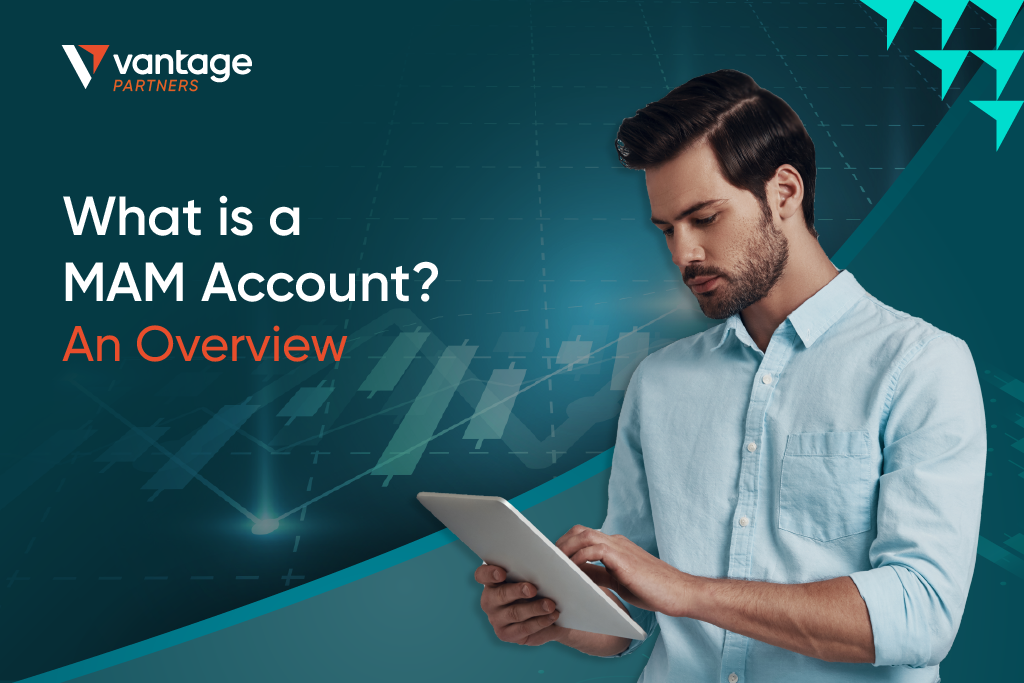
Professional traders wishing to take on more clients are often stymied by a lack of time. New digital tools and platforms that offer automation can be invaluable in helping traders manage a greater number of investment accounts.
One such tool is the Multi-Account Manager (MAM) account, which allows traders to manage multiple accounts from a single master account.
The master account is controlled by the trader, and is linked to several sub-accounts, each controlled by a different individual investor. The funds of the investors are pooled together and managed by the trader.
In a MAM account, the trader can allocate trades and manage risk on the master account. The trades are then automatically replicated in the sub-accounts.
In this blog post, we will discuss what an MAM account is, how it works, and what to consider when choosing one.
How does a MAM Account work?
Here’s a simplified overview of how MAM accounts work.
A professional trader opens a master account with a forex broker offering MAM account services. Once the master account is set up, the trader can then open individual sub-accounts for each client.
As the trader executes trades in the master account, the same trades are automatically replicated on the individual sub-accounts according to the allocation percentage.
For example, if the trader opens a trade with a 1% allocation on the master account, the same trade will be executed with a 1% allocation on all the sub-accounts.
Traders can also make manual adjustments to allocation percentages, designate different volumes to different sub-accounts, or group sub-accounts together for different trading strategies.
While the master account is controlled by the trader, the investor has control over their own sub-account. Investors can view their sub-accounts in real time, and but they cannot intervene to alter or close trades placed by the trader. Investors can also choose to deposit and withdraw funds from their sub-accounts at any time.

Why choose a MAM Account?
Professionally managed forex trading
With an MAM account, investors can take advantage from the expertise of professional traders or money managers who manage the investments on their behalf.
This can be especially beneficial for investors who may not have the time, experience, or knowledge to manage their forex investments on their own.
Save time and reduce errors
MAM accounts allow traders to execute trades for multiple clients at once, saving time and effort.
As the same trade is replicated across the sub-accounts chosen by the trader, trading errors are reduced.
Flexibility
Both investors and traders can enjoy a high degree of flexibility with MAM accounts. Investors can monitor their sub-accounts in real time.
Meanwhile, traders are at liberty to customise trading parameters to fit different needs and objectives, and can apply these tweaks to all sub-accounts, or selected ones.
Additionally, the trader can adjust the allocation percentages of each sub-account, and the investor can deposit and withdraw funds at any time without affecting the other sub-accounts.
Diversification
With an MAM account, investors can diversify their investments across multiple sub-accounts. This can help to spread the risk of the investments and potentially reduce the impact of any losses.
Reduced costs
MAM accounts can offer reduced costs for the investor, as the broker can aggregate orders and negotiate better trading conditions with liquidity providers. This can result in lower trading costs for the investor.
Who’s involved in a MAM account setup?
MAM Account Manager (Fund Manager)
The MAM Account Manager, also referred to as the Fund Manager, is the forex trader who controls the master account.
They are responsible for managing the risk in the master account and for executing trades on behalf of investor sub-accounts. Fund Managers can use several trading strategies, and can also adjust the allocation percentages of each sub-account.
For their services, Fund Managers may charge performance-based commissions, management fees, or both.
Investors
Investors are individuals who open and fund their own accounts. These accounts become sub-accounts once they are linked to a master account controlled by a Fund Manager, and essentially make up the capital for the Fund Manager to trade with.
MAM account investors may be individuals or institutions.
Broker
The broker is the entity that provides the MAM account infrastructure as well as the required trading platform. It also handles the trades executed by the master account.
The broker can be a retail forex broker or multi-asset brokerage, and typically charges a commission or a mark-up on the spread for their services.
What to consider when selecting a MAM account

1. Account requirements
MAM accounts may come with different sets of requirements, such as minimum investment amounts, base currency, and which geographical regions customers can trade from.
Investors and traders should pick a MAM account that best aligns with their needs, preferences and expertise.
2. Tradable assets
In the same vein, investors and traders should also check what currency pairs and tradable assets are offered by a particular MAM account before signing up.
A lack of currency pairs can reduce the range of trading strategies and interfere with your investment objectives.
3. Trading platforms
MAM accounts should offer seamless integration with the trading tools and platforms you are familiar with.
Traders and investors may take advantage from choosing MAM accounts that work natively with popular, award-winning trading software such as MT4 and MT5.
4. Additional tools
Traders and investors should also consider if a MAM account is compatible with other popular trading tools.
One such tool is Expert Advisors (EA), which is an algorithmically driven market analysis and trading software used by many traders on a daily basis.
5. Management fees
Investors should carefully consider the fees associated with a MAM account, as they may significantly impact investment returns.
A trader could charge a management or performance fee on a case-by-case basis. Meanwhile additional fees could also be charged by the broker providing the MAM platform, whether in the form of trading commissions or account fees.
6. Investment objectives
Investors should consider their investment objectives and whether a MAM account is appropriate for their investment goals.
MAM accounts are generally more suited to more advanced investors who want a greater degree of control over their managed trading accounts.
7. Broker reputation
Both investors and traders should choose a reputable and trustworthy broker with a history of providing reliable investment platforms and excellent customer support.
In addition, investors and traders should ensure that the MAM account and forex broker hosting it comply with relevant regulations and laws.
8. Transparency
It is also important to choose an MAM account that provides transparency and real-time monitoring capabilities.
The broker should provide access to performance reports, account statements, and other analytics tools that allow traders and investors to monitor the performance of their investment in real time.
Experience unparalleled advantages with Vantage MAM Account
Vantage’s MAM Account offers best-in-class trading capabilities and features which allows managing multiple investments and the flexibility to deploy custom trading strategies to sub-account groups.
Enjoy the freedom to execute your trading plans and be rewarded from the commissions on your clients’ trades, performance fees, and management fees. Learn more about how Vantage MAM Account can offer you, or sign up now.

Disclaimer
Any information/content/material is intended for educational purposes whereas Vantage does not represent or warrant that the material provided here is accurate, current, or complete and cannot be held responsible for any miscalculation/mistake or omission. Any reliance on such information is strictly at your own risk. The information provided here, whether from a third party or not, is not to be considered as a recommendation; or an offer to buy or sell; or the solicitation of an offer to buy or sell any financial instruments; or to participate in any specific trading strategy and/or as investment advice. Any research provided does not have regard to the specific investment objectives, financial situation and needs of any specific person who may receive it. Please seek advice before making any trading decision. Past performance is not an indication of future performance. The information provided is not intended for distribution to, or use by, any person in any country where such distribution/use would be contrary to local laws.
